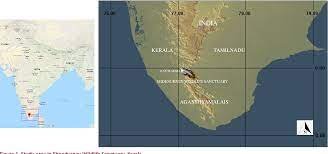Environment
Myristica swamps exist as isolated
pockets
·
Myristica swamps — tree
¬covered wetlands within the evergreen forests of the Western Ghats that when
formed a huge hydrological community all alongside the Western Ghats — now
exist as small, isolated pockets, stated a brand new observe.
·
Myristica swamps are
one of the most threatened ecosystems in India due to increased human pressure.
·
According to the
researchers, inspite of their little-recognised biota, the swamps harbour
several rarerelic floristic and faunal taxa comprising many endemic and
threatened species, with most plant species noticeably restricted in their
distribution.
·
These swamps are one of
the most unique and primeval ecosystems of the Western Ghats.
·
Critical inland swamp
habitats of India are the Myristica swamps, the Elaeocarpus swamps and the
Hadlus, all of which are forested wetland ecosystems that are invariably
freshwater in character.
·
Myristica swamps have
the characteristic tendencies of a dense evergreen closed wooded area, presence
of considerable knee roots protruding from waterlogged soil, soils with
excessive humus content material, and are wet or inundated throughout the year.
·
The ancient swamp
forests are endemic to the Western Ghats and a The historic swamp forests are
endemic to the Western Ghats and a smaller distribution exists inside the
Andaman and Nicobar Islands.
·
There are 60¬odd swamps
reported from Kerala and there may be many smaller ones, which are either not
mapped or reported.
·
An strive has been made
to map the swamps in Karnataka and a few research have focused on swamps in Goa
and Sindhudurga, the northernmost limit of swamps in Maharashtra.
·
In current years, many
Myristica swamps in the vital and southern Western Ghats are threatened by way
of the growing agricultural call for and are regularly converted to paddy
fields, or areca nut and teak plantations.
·
This is especially
actual of those swamps existing outdoor included forest tracts in the Western
Ghats landscape.
·
While wetlands have
been given prioritisation in the past, swamps in India have been relatively
ignored by scientists and policymakers.
·
Myristica swamps, just
like the floral plateaus of the northern Western Ghats and the Shola grassland
mosaics, face a higher danger of destruction than other evergreen woodland
types.
·
The Biodiversity Act of
2002 pronounces vital biodiversity areas, including Myristica swamps, as
Biodiversity Heritage Sites.
·
many swamps are in
reserve forests or sacred groves/community conservation landscapes, which do
not grant them safety from land-use conversion, and also are extraordinarily
fragmented and isolated.
·
As of February 2021, 58
clinical research had been carried out at the floristic components and plant
life of Myristica swamp forests and in line with them, there are at least
seventy-nine tree species, 26 shrubs, 27 climbers, and forty four herb species
recorded.
·
Any loss of the swamps
will even result in the extinction of associated species.


Comments